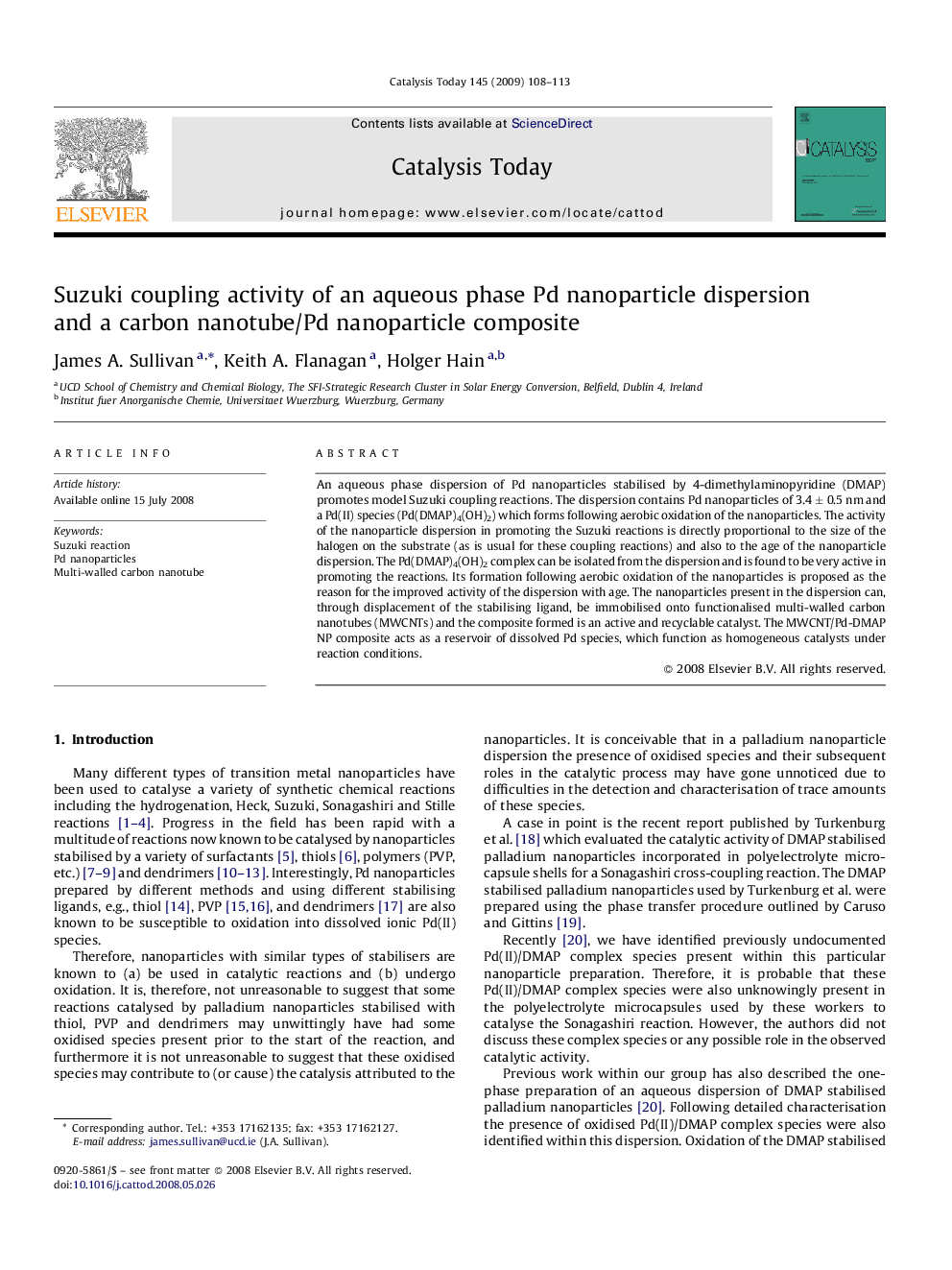| Article ID | Journal | Published Year | Pages | File Type |
|---|---|---|---|---|
| 56963 | Catalysis Today | 2009 | 6 Pages |
An aqueous phase dispersion of Pd nanoparticles stabilised by 4-dimethylaminopyridine (DMAP) promotes model Suzuki coupling reactions. The dispersion contains Pd nanoparticles of 3.4 ± 0.5 nm and a Pd(II) species (Pd(DMAP)4(OH)2) which forms following aerobic oxidation of the nanoparticles. The activity of the nanoparticle dispersion in promoting the Suzuki reactions is directly proportional to the size of the halogen on the substrate (as is usual for these coupling reactions) and also to the age of the nanoparticle dispersion. The Pd(DMAP)4(OH)2 complex can be isolated from the dispersion and is found to be very active in promoting the reactions. Its formation following aerobic oxidation of the nanoparticles is proposed as the reason for the improved activity of the dispersion with age. The nanoparticles present in the dispersion can, through displacement of the stabilising ligand, be immobilised onto functionalised multi-walled carbon nanotubes (MWCNTs) and the composite formed is an active and recyclable catalyst. The MWCNT/Pd-DMAP NP composite acts as a reservoir of dissolved Pd species, which function as homogeneous catalysts under reaction conditions.
